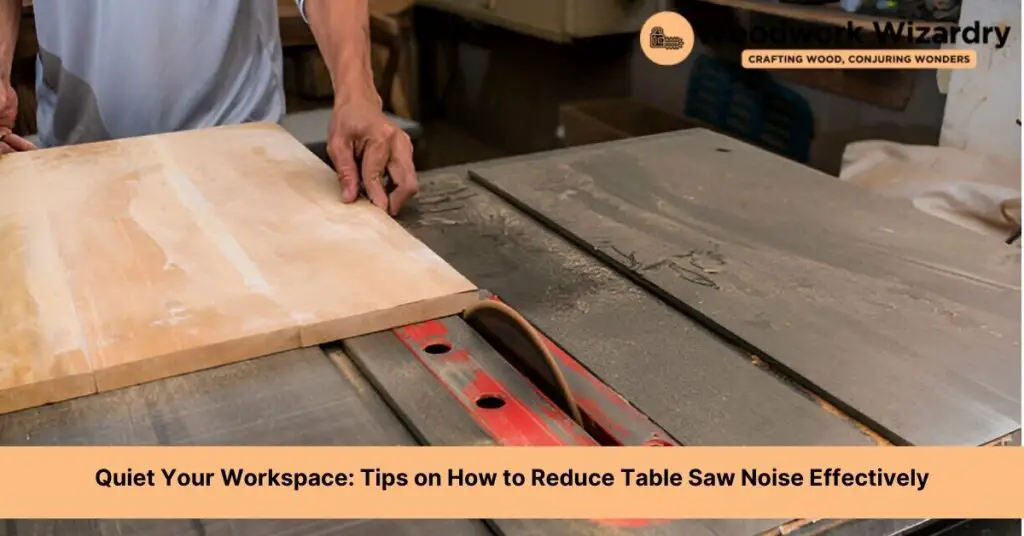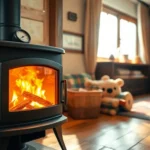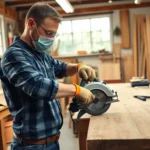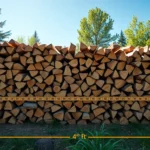We’ve all been there — in the middle of an intense woodworking project, our concentration is shattered by the high-pitched scream of a table saw cutting through lumber. Not only does this noise make it hard to focus, but it also poses a risk to our hearing over time. But fear not, fellow woodworkers, because we’re here to share some tips and tricks on how to significantly reduce that pesky table saw noise.
Reducing the racket doesn’t mean compromising on quality or performance. In fact, some of our methods will not only quiet down your saw but might also enhance its efficiency. So, whether you’re working in a shared space or just trying to keep the peace at home, we’ve got you covered. Let’s dive into the world of quieter cuts and more pleasant woodworking experiences.
Understanding Table Saw Noise
To effectively reduce table saw noise, it’s essential to understand its origins and the impact on our hearing. By pinpointing the noise sources, we can apply targeted strategies that not only make our workspace quieter but also safer.
Sources of Noise in Table Saws
Several factors contribute to the noise generated by table saws:
- Motor Type: Induction motors tend to be quieter than universal motors. The latter operates at higher RPMs, producing more noise.
- Blade Type: Blades with more teeth emit a higher pitched sound when cutting through material. Conversely, blades designed for quiet operation can significantly reduce noise levels.
- Material Type: Harder materials, like hardwoods and metals, generate more noise upon contact with the saw blade compared to softer materials such as softwoods.
- Saw Condition: A table saw in poor condition, with misaligned parts or dull blades, requires more force to cut through materials, leading to increased noise.
- Cutting Method: The method of cutting, whether ripping or crosscutting, influences the noise level. Ripping usually generates more noise due to the prolonged contact between the material and the blade.
Decibels and Hearing Safety
Noise levels are measured in decibels (dB), and prolonged exposure to noise levels above 85 dB can lead to hearing damage. Most table saws operate at sound levels ranging from 90 to 100 dB, putting users at risk of hearing loss over time. Using ear protection, such as earmuffs or earplugs, is crucial when working with loud equipment like table saws. Moreover, implementing noise-reduction strategies becomes part of maintaining a safe and comfortable working environment.
Pre-Operation Steps to Reduce Noise
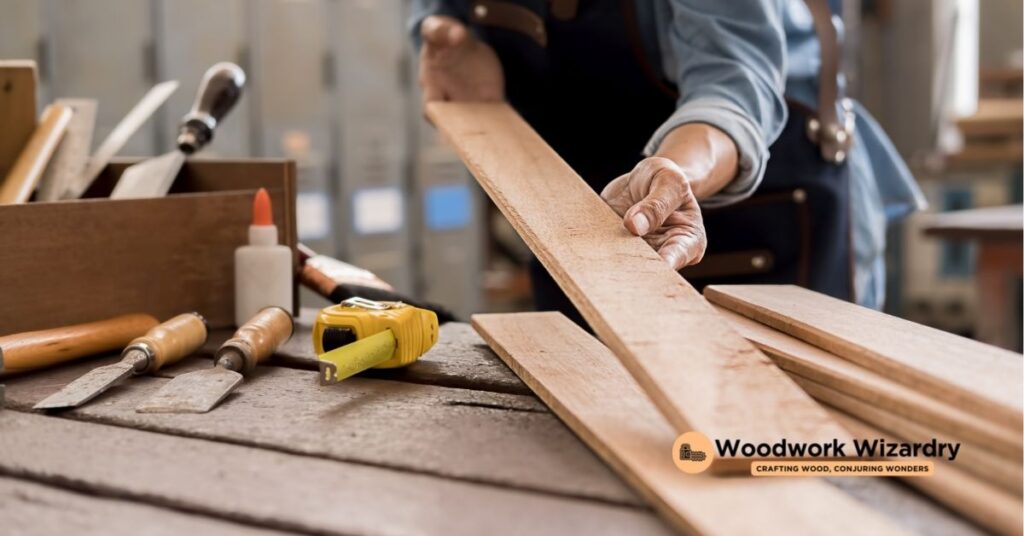
Before powering up the table saw, several pre-operation steps can significantly lower the noise level. These steps focus on minimizing vibration and ensuring the saw operates smoothly.
Checking and Tightening Loose Parts
Identify any loose components on the table saw, such as bolts, nuts, or belts. Loose parts often lead to additional vibration and noise during operation. Perform a thorough examination of the table saw, paying close attention to the alignment and tightness of all parts. Tighten loose bolts and nuts with appropriate tools. Ensure belts are snug but not overly tight, as over-tightening can lead to increased wear and tear. By securing all parts, vibration reduces, leading to quieter operation.
Proper Blade Selection and Maintenance
Selecting the right blade for the task not only improves cutting efficiency but also reduces noise. Use blades with the correct type and number of teeth for the material being cut. For instance, ripping hardwoods typically requires blades with fewer teeth, while cross-cutting benefits from blades with more teeth.
Maintaining blades in pristine condition is crucial. Clean blades regularly to remove buildup of sap and sawdust that can cause additional resistance and noise. Dull blades also generate more noise due to the increased effort required to cut through materials. Sharpen or replace dull blades to ensure smooth, efficient cuts. A well-maintained blade cuts quietly and reduces the workload on the table saw motor, further decreasing noise levels.
During Operation Noise Reduction Techniques
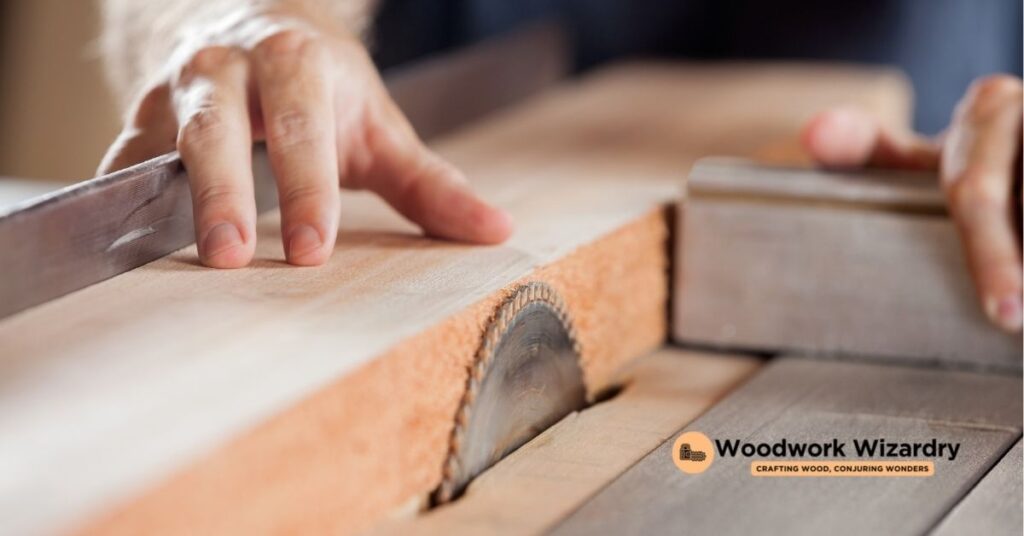
Building on the pre-operation steps, we now focus on techniques to further reduce table saw noise during operation. These methods aim to create a quieter workspace while ensuring safety and efficiency.
Correct Table Saw Setup
Properly setting up the table saw plays a crucial role in noise reduction. Ensure the saw is perfectly level and securely mounted on a stable base. Stability minimizes vibration, one of the primary sources of noise. Equally important, confirm the alignment of the fence and the blade. Correct alignment reduces the chances of wood pinching against the blade, which not only decreases noise but also lowers the risk of dangerous kickbacks.
Using Low-Noise Blades
Selecting a blade designed to produce less noise significantly impacts overall sound levels. Low-noise blades, often labeled as “silent” or “quiet,” feature special dampening slots cut into the body of the blade. These slots disrupt vibration patterns that produce noise. Additionally, blades with a higher tooth count cut more quietly by reducing the amount of material removed with each pass. Choosing such blades enhances quiet operation without sacrificing cut quality.
Correct Feeding Techniques
The manner in which wood is fed into the saw can affect the noise level. Feed wood smoothly and steadily; erratic feeding can cause the blade to bind and produce excess noise. Furthermore, adjusting the feed rate to match the material and blade type optimizes the cutting action for quieter operation. For example, harder woods may require a slower feed rate to reduce noise and improve cut quality.
Improving Dust Collection
A clean and efficient dust collection system not only maintains a healthier work environment but also reduces operational noise. An overaccumulation of sawdust can cause the motor to work harder and louder. Ensuring the dust collection system is clear and functioning efficiently helps the saw operate smoother and quieter. Additionally, using a dust collector with a lower decibel rating can further minimize the overall noise level in the workspace.
Add-Ons and Modifications
Exploring add-ons and modifications presents further opportunities to reduce table saw noise. Integrating these solutions enhances the efficiency of earlier discussed methods.
Anti-Vibration Mats and Pads
Placing anti-vibration mats or pads under the table saw significantly reduces noise. These accessories absorb vibrations that contribute to noise, ensuring a quieter operation. Mats made of dense, vibration-absorbent materials like rubber are effective. They not only minimize sound transmission to the floor but also improve the stability of the table saw, which, in turn, enhances precision in woodworking projects.
Sound Enclosures
Building or purchasing a sound enclosure for the table saw offers substantial noise reduction. Enclosures, typically made from sound-absorbing materials, envelop the table saw, trapping and dampening noise. When designing or selecting an enclosure, ensure it allows for adequate ventilation to prevent the saw from overheating. This modification is particularly efficient for stationary saws, creating a significantly quieter workspace.
Upgrading to a Quieter Belt Drive
Replacing the table saw’s standard belt drive with a quieter option can reduce operational noise levels. A poly-V belt or a link belt produces less vibration compared to traditional V-belts. This reduced vibration leads to quieter operation. In addition, these belts tend to stay in alignment better and last longer, offering an improvement in both noise reduction and overall table saw performance. Upgrading is straightforward and provides immediate results in noise decrease.
Maintenance Tips for Long Term Noise Reduction
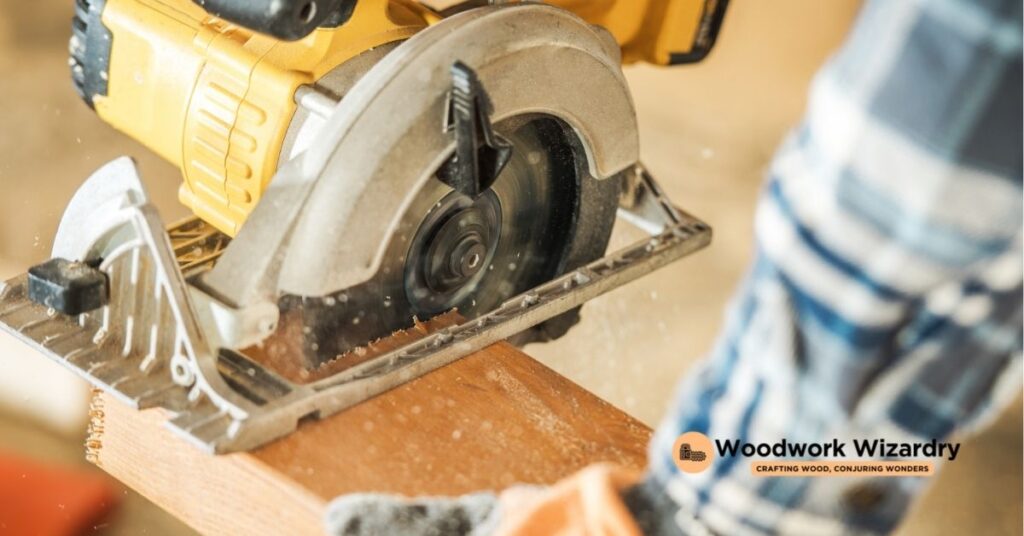
Ensuring your table saw operates quietly involves more than just handling and operation techniques. Maintenance plays a crucial role in reducing noise levels. By following these maintenance tips, you can ensure the longevity of your table saw while keeping it running smoothly and more quietly.
Regular Blade Cleaning and Sharpening
Keeping blades clean and sharp is essential for noise reduction. Build-up of sap and sawdust on blades increases friction, leading to more noise during cuts. We recommend cleaning blades regularly using a resin remover, following the product’s instructions for safe application. Additionally, sharpen blades whenever you notice a decrease in cutting efficiency. Dull blades require more force to cut, generating unnecessary noise. For an optimal result, consider professional sharpening services, especially for blades with complex tooth configurations.
Lubricating Moving Parts
Proper lubrication of the table saw’s moving parts significantly reduces noise created by friction. Identify components that require lubrication, such as the arbor bearings, gears, and trunnions. Use a high-quality lubricant suitable for power tools, applying it sparingly to avoid attracting dust that can cause premature wear and additional noise. Schedule lubrication at regular intervals or whenever you notice increased resistance or squeaking noises during operation.
Periodic Alignment Checks
Misalignment of the table saw’s components not only affects accuracy but also contributes to noise production. Ensure the blade is aligned with the miter slot and fence to reduce stress on the motor and minimize blade resistance during cutting. Check the alignment of the belt and pulleys as improper alignment can lead to excessive wear and vibration, generating additional noise. Conduct these checks periodically, especially after heavy use or transporting the table saw, to maintain optimal performance and noise levels.
Troubleshooting Common Issues

In our journey to create a quieter workspace, identifying and addressing common issues with our table saw is crucial. Below, we outline effective strategies for troubleshooting these challenges.
Vibrations and Unusual Noises
Identify the source of vibrations by checking the saw’s stability. Ensure the saw is securely anchored to its workstation, as loose fittings can contribute significantly to vibration and subsequent noise. Inspect the motor mount and drive belt for wear and tear. Replace the belt if it’s frayed or shows signs of deterioration. Use anti-vibration pads under the saw’s legs to dampen noise. Tighten all bolts and screws, as loose parts can also cause vibrations and unusual noises. Regular lubrication of moving parts helps in reducing friction, which can lead to noise reduction.
Dull Blades
Recognize dull blades by looking for signs of wear or damage. A dull blade requires more force to cut, leading to increased noise. Replace or sharpen blades that are dull, as a sharp blade makes cleaner and quieter cuts. Clean blades regularly to remove sap and resin buildup, which can also contribute to noise by hindering smooth cutting action. Ensure you’re using the correct blade type for the material you’re cutting, as incorrect blades can increase noise levels through inefficient cutting.
Misalignment
Check for blade alignment by ensuring the blade is parallel to the miter slot. Misalignment can cause the blade to bind with the material, increasing noise and posing a safety hazard. Adjust the bevel and blade angle to ensure they are accurately set according to the manufacturer’s specifications. A properly aligned saw not only reduces noise but also extends the life of your saw and improves cutting accuracy. Perform regular checks on the fence alignment, as a misaligned fence can lead to improper material feed, increasing noise and decreasing cut quality.
Conclusion
We’ve walked through the essentials of making our woodworking sessions quieter and safer by tackling table saw noise at its roots. By understanding what causes the noise and how to address each factor we’re not just improving our work environment but also protecting our hearing. Remember it’s not just about the immediate fixes but also about maintaining our equipment to prevent noise issues down the line. Let’s put these practices into action and enjoy a more peaceful woodworking experience together. Here’s to quieter cuts and safer ears!
Related Posts:
- Spray Polyurethane Flawlessly with an Airless Sprayer: A How-To Guide
- Sanding Between Coats of Shellac: A Must for Smooth Finishes?
- Optimal Soaking Time for Bending Wood: A Complete Guide
- DIY Guide: How to Make Wood Filler with Sawdust for Perfect Finishes
- Quiet Your Workspace: Tips on How to Reduce Table Saw Noise Effectively
- Miter Saw Showdown: 10 Inch vs 12 Inch – Which Suits Your Project?
- Mortise vs Firmer Chisel: Discover the Key Differences

